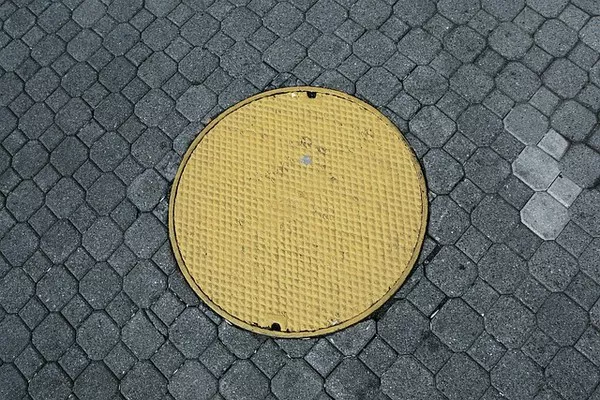In modern societies, effective wastewater management is a critical aspect of maintaining public health and safeguarding the environment. Sewage systems play a pivotal role in this regard, efficiently collecting, treating, and disposing of wastewater and sewage to prevent contamination of water bodies and ensure the well-being of communities. This article delves into the intricacies of sewage systems, explaining how they work to ensure the proper treatment of wastewater.
Collection of Wastewater
The first step in the sewage process involves the collection of wastewater from various sources, including residential, commercial, and industrial areas. This wastewater, often referred to as sewage or effluent, contains a mixture of human waste, organic matter, chemicals, and debris. The collection of sewage is achieved through an extensive network of underground pipes known as sewers. These pipes are strategically designed to carry wastewater away from inhabited areas and direct it towards treatment facilities.
Transportation and Gravity
Gravity plays a crucial role in the movement of sewage within the sewer system. Pipes are designed with a slight downward slope to facilitate the natural flow of wastewater. As sewage travels through the pipes, it gradually gains momentum due to the gravitational force, which helps to prevent clogs and backups. To overcome elevation changes and transport sewage across regions where gravity alone is insufficient, pump stations are strategically installed to lift the wastewater to a level where gravity can take over again.
Preliminary Treatment
Upon reaching a wastewater treatment plant, the sewage undergoes a series of treatment processes designed to remove large solid materials and debris. Screens and grit chambers are utilized in the preliminary treatment stage. Screens act as filters, capturing larger objects such as sticks, plastics, and rags. Grit chambers, on the other hand, allow heavier particles like sand and gravel to settle at the bottom, preventing damage to downstream equipment and facilitating subsequent treatment stages.
Primary Treatment
After the preliminary treatment, the sewage enters the primary treatment phase. Here, the wastewater is allowed to settle in large tanks known as primary clarifiers. Over time, suspended solids and organic matter settle at the bottom of these tanks, forming a sludge layer. This sludge is then removed and treated separately, often undergoing processes like anaerobic digestion to further break down organic materials and produce biogas.
Secondary Treatment
Following primary treatment, the sewage undergoes secondary treatment, which is designed to further break down dissolved and suspended organic materials. One of the most common methods for secondary treatment is the activated sludge process. In this process, microorganisms, primarily bacteria, are introduced to the wastewater to biologically digest the remaining organic matter. The mixture of wastewater and microorganisms, known as activated sludge, is aerated to enhance the microbial activity, leading to the conversion of organic pollutants into carbon dioxide, water, and additional sludge.
Tertiary Treatment
In some cases, tertiary treatment may be necessary to achieve a higher level of water quality before the treated wastewater is released into the environment. Tertiary treatment involves advanced processes to remove specific contaminants such as nutrients (nitrogen and phosphorus), trace metals, and other pollutants. Common methods used in tertiary treatment include filtration, chemical precipitation, and advanced oxidation.
Disinfection
Before the treated wastewater is discharged into nearby water bodies or reused for non-potable purposes, it must undergo disinfection to eliminate harmful pathogens. Chlorine, ultraviolet (UV) light, or ozone are commonly used disinfection methods. Chlorine is effective at killing bacteria and viruses but requires careful monitoring to prevent the release of harmful disinfection byproducts. UV light and ozone, on the other hand, offer efficient disinfection without introducing additional chemicals.
Sludge Management
Throughout the sewage treatment process, various stages produce sludge as a byproduct. This sludge contains concentrated organic matter, bacteria, and other solids removed from the wastewater. Sludge management is a critical aspect of sewage treatment, as improper disposal can lead to environmental contamination. Depending on the type of sludge and local regulations, it can be further treated through processes like dewatering, composting, or incineration. Some sludge can even be converted into beneficial products like fertilizer or biogas through anaerobic digestion.
Effluent Disposal or Reuse
After undergoing a comprehensive treatment process, the treated wastewater, known as effluent, is ready for disposal or potential reuse. Depending on local regulations and environmental conditions, the effluent may be discharged into rivers, lakes, or oceans. Alternatively, it can be repurposed for non-potable applications such as irrigation, industrial processes, or groundwater recharge, contributing to sustainable water resource management.
Conclusion
Sewage systems play an indispensable role in maintaining the health and environmental well-being of communities around the world. Through a series of meticulous processes, sewage treatment facilities effectively remove pollutants, organic matter, and harmful pathogens from wastewater, ensuring that the water released into the environment is safe and compliant with regulatory standards. As we continue to face challenges related to population growth, urbanization, and environmental protection, the optimization of sewage systems remains a critical endeavor to safeguard our water resources and foster sustainable development.

